The intensifying El Niño will set this winter apart from the previous year in certain regions of the United States. While major cities will experience colder temperatures and increased snowfall, this won’t be the scenario everywhere.
October 11, 2023 | Staff Editor
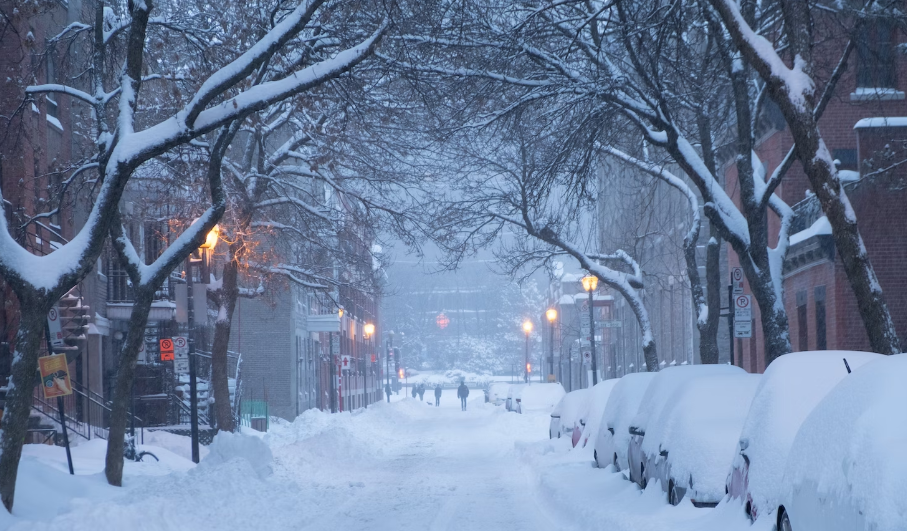
The upcoming winter is anticipated to be much different than last winter, particularly in the central and eastern United States, with February expected to be notably active and intense, according to AccuWeather meteorologists. The change in weather patterns will be primarily influenced by the strengthening El Niño phenomenon, characterized by warmer-than-normal waters in the tropical Pacific Ocean, marking a departure from the La Niña pattern of the past three winters. AccuWeather’s meteorologists offer a comprehensive overview of the 2023-2024 winter forecast, including details on the impending cold and snowy weather, and a region-by-region breakdown.
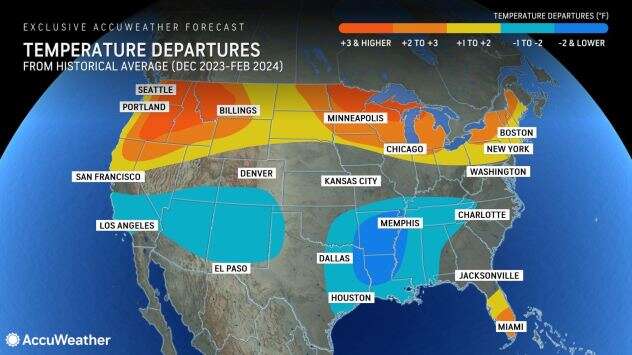
“El Niño is upon us, it came on strong here in late summer, and it will continue to be strong and a dominating factor going into our winter forecast,” said AccuWeather Lead Long-Range Meteorologist and veteran forecaster Paul Pastelok. El Niño, a regular climatic phenomenon, occurs when the central and eastern Pacific Ocean near the equator experiences above-average water temperatures for an extended period. These temperature shifts influence the jet stream and subsequently impact weather patterns worldwide, including North America. The impact of El Niño on weather is particularly pronounced during the winter, especially when it is as strong as anticipated for the upcoming season. However, Pastelok cautions that each El Niño event is unique, and this winter’s weather patterns may differ from those of recent El Niño-influenced winters.
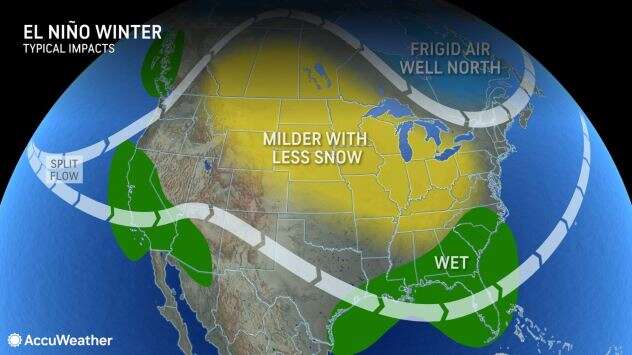
Northeast
Residents in the Northeast should prepare for a winter that differs significantly from the previous one, especially across most of New England and the mid-Atlantic regions. Typically, the initial snowfall in the Northeast is associated with the influence of the Great Lakes, where cold air interacts with the relatively warm lake waters to generate snowfall. Last winter, Buffalo, New York, experienced two intense bursts of lake-effect snow, the first in mid-November with up to 6 feet of snowfall, followed by a deadly lake-effect blizzard just days before Christmas. However, AccuWeather predicts that this winter won’t replicate those extreme conditions. Still, those residing downwind of the Great Lakes should be prepared for occasional episodes of lake-effect snow from late autumn through the beginning of 2024. While Buffalo may not see as much snow as last winter, millions of people along the East Coast are expected to experience more snowfall compared to the 2022-2023 season.
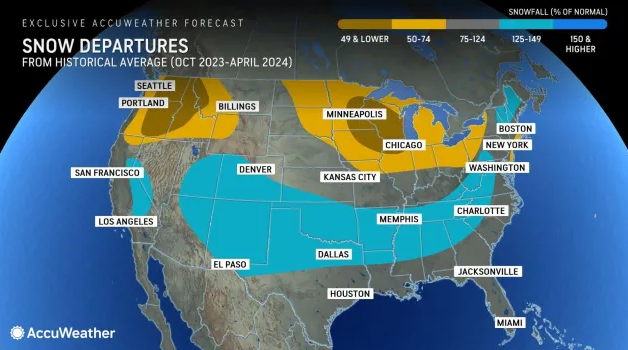
Southeast
The Southeast is poised for a potentially tumultuous winter, with AccuWeather forecasters cautioning about an elevated risk of severe weather.”El Niño tends to favor severe weather in Florida and the Gulf Coast states,” Pastelok said.
In addition to El Niño, water temperatures in the Gulf of Mexico continue to run above the historical average. These two factors will create the “perfect setup” for severe weather and tornadoes across the Gulf Coast during the winter, Pastelok explained.
In 2016 the Southeast saw numerous severe weather outbreaks during a robust El Niño, including a tornado outbreak in Florida and more extensive severe weather along the Gulf Coast. By the end of February 2016, the number of tornado reports in the U.S. had exceeded historical averages due to the severe weather events throughout the Southeast.
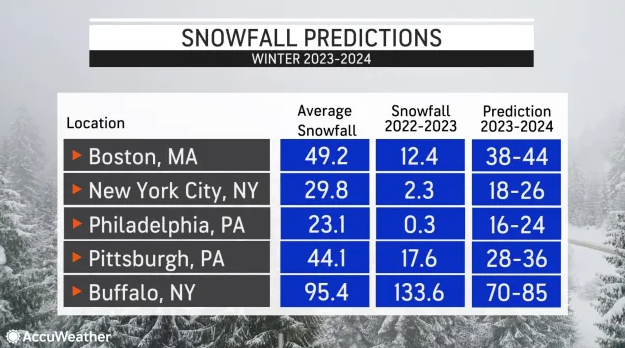
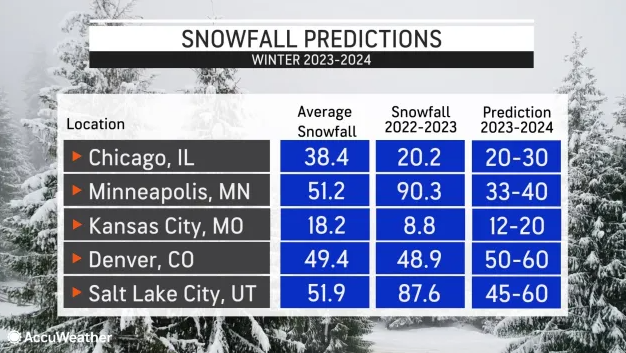
Central US
Prepare for a weather rollercoaster ride in the Central United States this winter. While the previous winter was exceptionally snowy across the Midwest, delighting ski resorts and resulting in 90.3 inches of snow in Minneapolis, the upcoming winter is expected to be milder, with seasonal snowfall totals predicted to be less than half of last year’s figures. Expect fewer cold spells, especially in the early part of winter, as December and the beginning of 2024 are forecasted to be relatively mild. However, brace for a potential change in the latter half of the season, as a shift in the polar vortex could usher in frigid Arctic air, bringing some of the coldest conditions of the winter to the central and midwestern U.S.

Western US
The Western United States is gearing up for a potentially historic winter, reminiscent of last year, with El Niño expected to play a key role in shaping weather patterns. California, Nevada, and the Four Corners region, which encompasses Utah, Arizona, New Mexico, and Colorado, may experience a repeat of the previous winter’s extreme conditions, thanks to El Niño. Typically, El Niño ushers in a stormy pattern for California, bringing frequent rain and mountain snow, while largely bypassing the Pacific Northwest. The upcoming season appears to be following this traditional El Niño pattern, with the jet stream directing storms toward California, Nevada, and the Four Corners. This contrasts with the El Niño of 2015-2016 when storms mostly avoided California. Additionally, the presence of cooler waters southeast of Hawaii could occasionally shift the storm track south of Southern California.
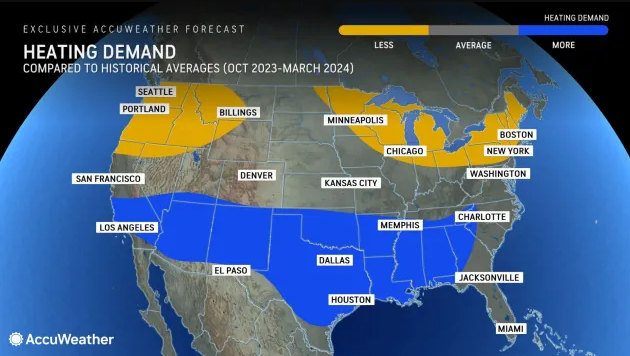
Heating and energy demand
AccuWeather’s long-range forecast for the United States predicts a colder winter compared to the previous year, bringing temperatures closer to normal levels. This is expected to result in increased heating demand nationwide, even though some northern regions will still experience below-average demand. For example, in New York, heating degree days are projected to be 4% below the historical average, a significant improvement compared to the 15% below-average figures from the previous year, resulting in an approximately 11-12% increase in demand. A similar trend is anticipated in Boston and the rest of New England. In the Southern states, including Texas, there will also be an uptick in heating degree days (HDD), with the possibility of energy demand surpassing historical norms this winter.
